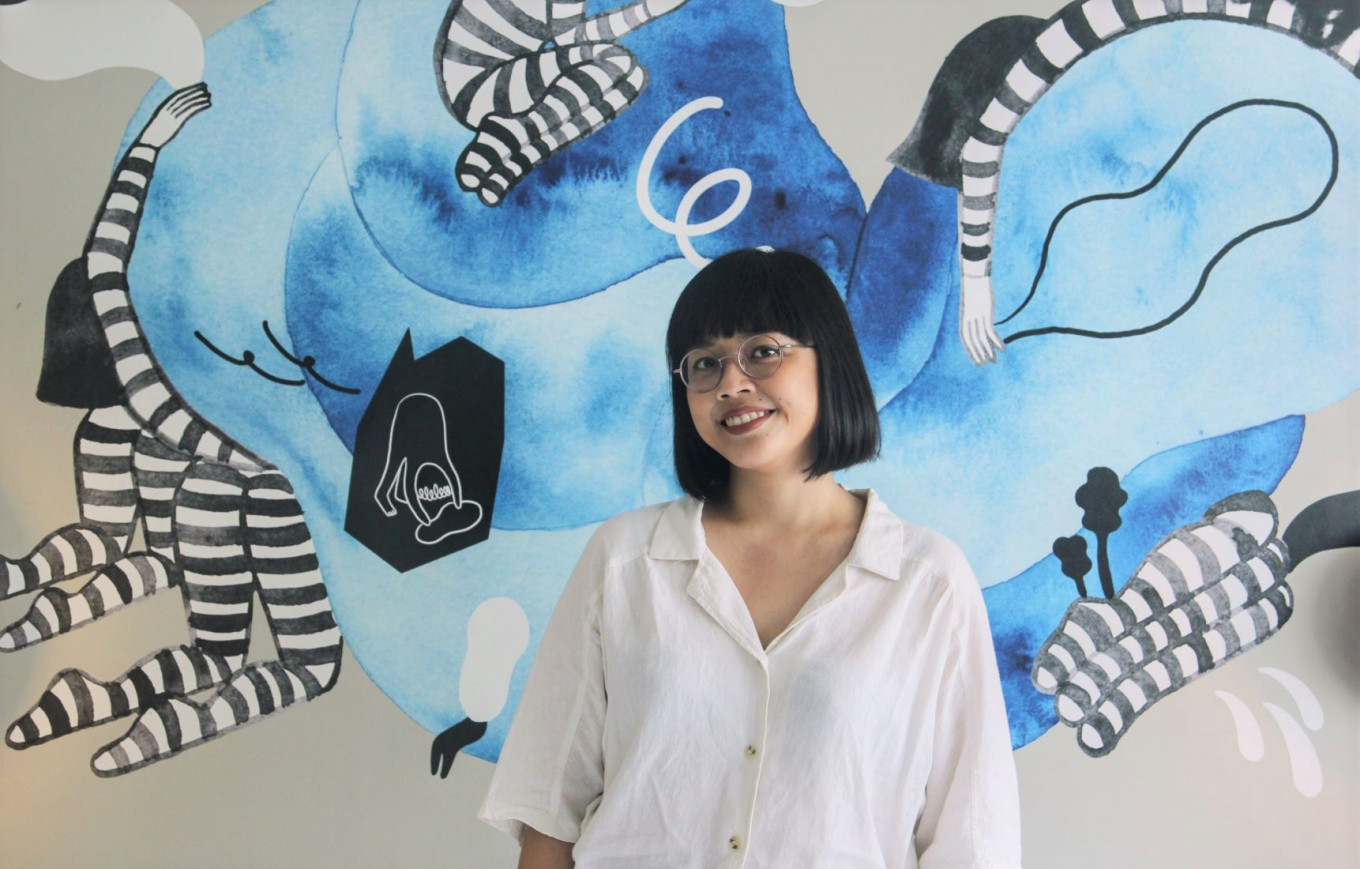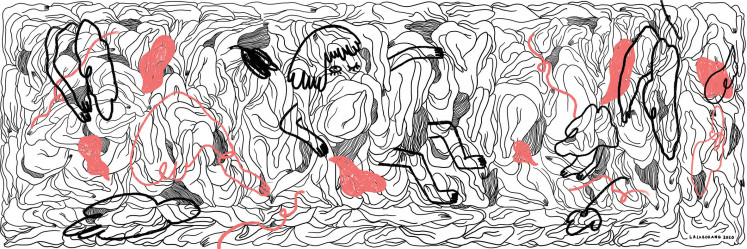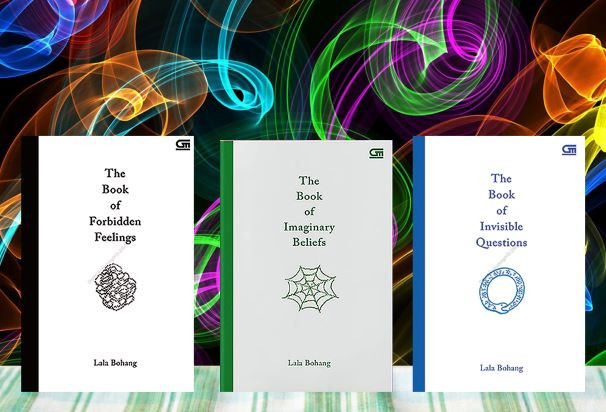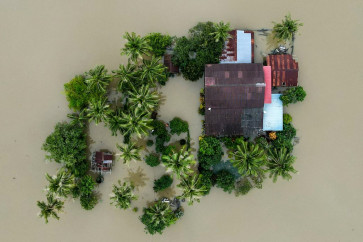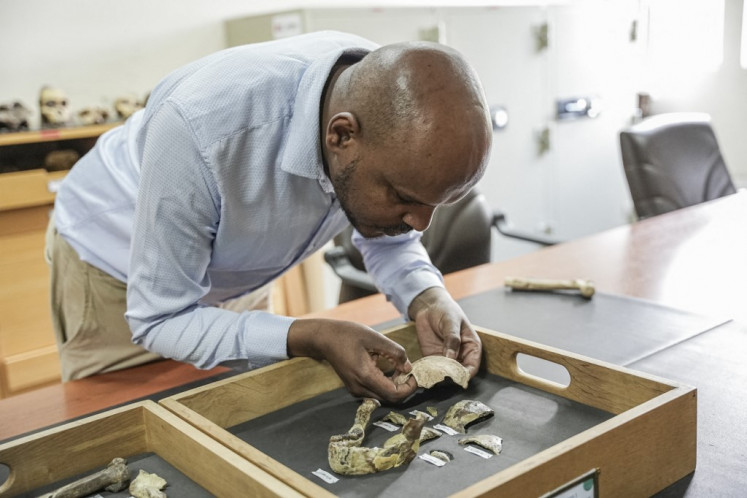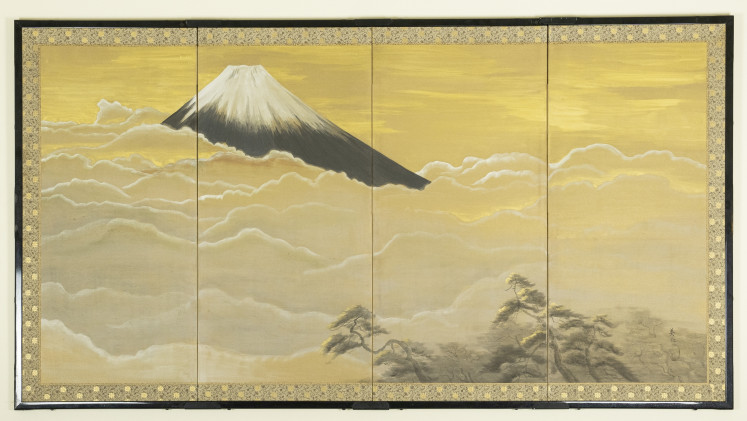Popular Reads
Top Results
Can't find what you're looking for?
View all search resultsPopular Reads
Top Results
Can't find what you're looking for?
View all search resultsLala Bohang explores the feminine in the fantastical
Fairy tales are a staple of childhood naptimes, but few know of their sometimes dark origins, as artist and author Lala Bohang can attest.
Change text size
Gift Premium Articles
to Anyone
F
resh off her residency in Berlin and Kassel, Germany, artist and author Lala Bohang said she originally applied two years prior, but did not receive the spot until a year later.
“Those who know me would know I’m generally a slow person when it comes to new things, so applying for a residency outside Indonesia is really a brave move on my part,” she said in an Instagram Live session hosted by Goethe-Institut Indonesien.
Hailing from Makassar, South Sulawesi, Lala has always been interested in fairy tales, as can be seen from her whimsical and fantastical illustrations.
Though she received her degree in architecture at Parahyangan University in Bandung, West Java, she would find her passion in her drawings and writings, which soon propelled her to become a household name in the Indonesian illustration scene.
Whimsical: Artist and author Lala Bohang majored in architecture, but was drawn toward writing and illustrating. (Courtesy of Lala Bohang/-)Luckily for Lala, the residency program she applied for – Literarisches Colloquium Berlin’s Crossing Borders – gives artists freedom on their chosen topics, as long as their work relates to Germany.
Because of this, she applied to research the social construction of female characters in German and Indonesian fairy tales, noting the similarity in both countries’ enthusiasm for the genre.
Since German fairy tales are largely synonymous with the works of the Brothers Grimm, it is only fitting that Lala spent some time in Kassel, where the museum Grimmwelt Kassel is located.
“The museum was amazing, and I saw how the brothers would collect these tales from women in the 1800s. What’s interesting is why they collected these tales, which turned out to be because many women were illiterate at the time.
“One of the things women at the time would do to amuse themselves is by getting together and telling these tales. Because the brothers were philologists and interested in the origins of German language, they decided to compile these oral tales,” she explained, adding that the narrations were often influenced by the women’s interests.
While in Kassel, Lala also interviewed several people, and asked what gender they would assign to the tales.
Surprisingly, all of her respondents said that the gender was male, even though tales came from women.
Lala said she became interested in researching the Brothers Grimm tales because her childhood was spent with her grandparents, who would read her fairy tales.
“I think that influenced a lot of how I think about women – I still remember up until my 20s, my dream was to get married quickly because of value instilled [in me] was that marriage would solve all life’s problems, even though it generally adds more of them,” she said.
The second value she got from all those years of fairy tales is a black-and-white sense of morality, where one is either good or bad, and that good people will come across many misfortunes in their lives.
“Slowly, as these values changed in my head for me, I then realized that these tales can be dangerous, as I’m sure there are other kids like me out there who are just as naive.”
Personal reflections: Lala's books are often filled with musings on life, both general and personal. (Courtesy of Gramedia/-)As for both countries’ folk tales, she noted that in terms of characters, the Disney-fied versions of the Grimm fairy tales and Indonesian folk tales were the same in terms of presenting a black-and-white duality, and also focusing on young women longing for a man to marry.
But even so, these Disney-fied stories are sanitized versions of the originals. For example, in Disney’s Snow White, the ending sees the eponymous character living happily ever after with her prince, whereas in the original, the queen is put to death via dancing in red-hot slippers.
In her research, Lala’s aim is to create a mash-up book of sorts, set in a universe where characters from both Indonesian and Grimm folk tales meet and interact with each other.
Of course, the characters here are more than just mere crossovers, but rather a reflection on their original stories. After all, Lala’s books have been vessels for reflection, such as The Book of Invisible Questions, which muses on topics both general and personal, as well as The Book of Forbidden Feelings’ musings on life.
“The context is that they live in different eras; they interact and retell the circumstances of their respective stories. I want them to no longer be black or white, good or bad, but for each to have their reasons.” (ste)

